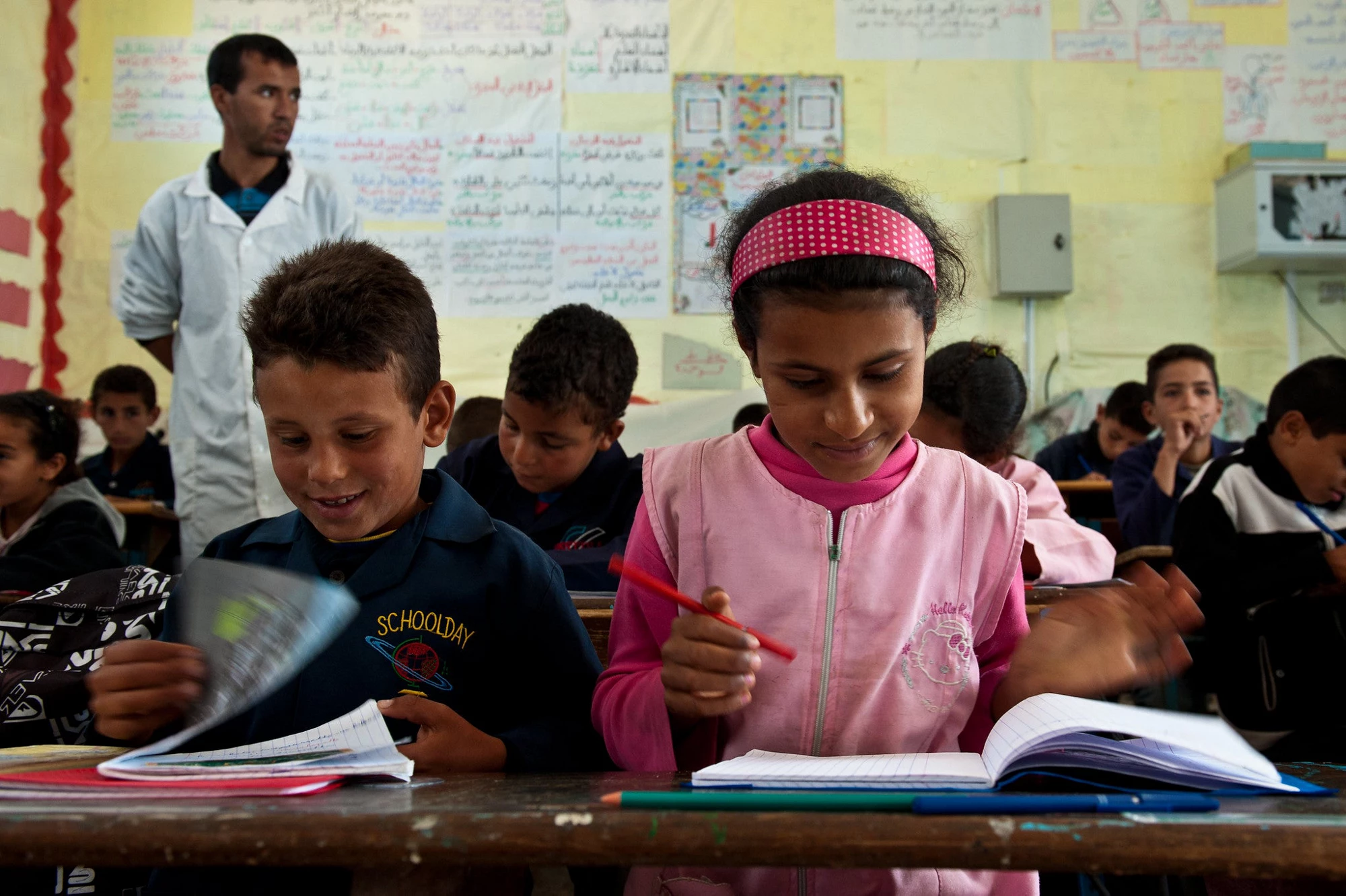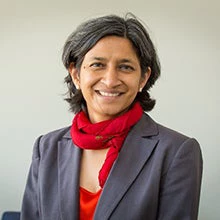
Learning poverty has reached unacceptable levels in many developing countries. Even though enrollment is often high—at least in the lower grades—the quality of education is poor. This is often because of inadequate education financing: countries are either spending too little, the spending is inefficient, or a combination of both.
Many countries are not spending enough on education
The amount a country spends on education per child is the most direct measure to assess whether sufficient resources are devoted to education. While it is difficult to establish a benchmark of the cost of ensuring quality education in different countries and contexts, comparisons are informative. The amounts spent vary widely: in a typical low-income country, expenditures per child per year are between $50 and $80. In an upper middle-income country, $1100, and in a high-income country, $8500.*
It is important to distinguish between a country’s commitment to education and the resources it has available to invest. For example, Sierra Leone spends around $80 per child, a very low investment per student, but allocates approximately 22 percent of public expenditure to education—one of the highest percentages in the world—signaling a strong political commitment to education.
What is being spent is not always spent well
Achieving better learning outcomes requires the efficient use of adequate resources. There are wide variations in efficiency in spending between countries: South Africa, an upper middle-income country, invests nearly $2,400 per child of primary school age. However, it struggles with a persistently high learning poverty rate of 79 percent. (Learning poverty is the proportion of 10-year-olds who are unable to read a simple text with comprehension.) This level of learning poverty is similar to that of Guinea, a much poorer country, which invests about $150 per child. Similarly, Sri Lanka invests $615 per student but has the same level of learning poverty as Czechia, a country that invests approximately five times that amount. Even noting the variance in human resources costs between the two countries doesn’t fully explain the difference in the return on investment.
Often, the most impactful way to improve efficiency is to effectively manage human resources. Salaries of teachers and principals exceed 70 percent of the education budget in most countries. In some low-income countries, it hovers around 90 percent. Reforms that reduce teacher absenteeism, improve effective teacher deployment practices, enhance teaching effectiveness in the classroom, and make teachers accountable for students’ learning, can lead to significant efficiency improvements and improved learning outcomes.
Unequal distribution of resources can also lead to disparities in educational opportunities
Education is critical to equalizing opportunities and providing everyone—regardless of where they were born, their socioeconomic background, gender, or race—with the skills to achieve their full potential.
Sometimes governments have chosen to disproportionately subsidize higher education. Or resources are not reaching the most marginalized children, such as those with disabilities, or minorities that speak a different language than the one used in the classroom. Such inequities in spending result in large variances in the quantity and quality of education received by different groups. This, in turn, contributes to greater inequality in potential future earnings, and persistent socio-economic disparities.
In many countries, per child education spending is significantly higher in more affluent regions. In Indonesia, for instance, more affluent subnational governments have more revenue sources of their own which they can leverage for greater spending on education. In contrast, less affluent subnational governments must exclusively rely on central government transfers. Since 2021 these central government transfers have taken account of both number of children in the regions and of factors affecting the costs of providing education in different contexts such as a region’s remoteness and local price level. Nevertheless, significant disparities in per child spending remain.
What should governments and development partners do?
Without political prioritization of education, countries face greater learning poverty, stagnating human capital development, and slower economic growth. In many countries, education needs to recover the space it lost in national budgets because of COVID-19. Forty percent of low- and low-middle-income countries reduced their education spending in 2020, after the onset of the pandemic. Following the reduction in 2020, governmental education spending per capita, globally, grew back partly in 2021 for all country income groups, with low-income countries registering a rise in per capita education spending of 8 percent from 2020 to 2021. Still the differences in government per capita spending are on average 152 times higher in high-income countries than in low-income countries in 2021.**
Quality education that delivers better learning outcomes requires greater and more efficient spending. Evidence points to three key areas to improve efficiency: prioritizing universal foundational learning; emphasizing interventions that are most effective at improving learning (e.g., reducing teacher absenteeism, improving teacher deployment; provide teachers with lessons plans and coaching); and adopting reforms to strengthen budget planning, financial management, procurement, and management capacity. Governments must also address inequities in spending, with a particular attention to poorer geographic areas, and disadvantaged children. Brazil and China offer good examples of education funding mechanisms that differentiate funding based on regional needs and equity principles and reward improvements in outcomes.
To support countries in this effort, the global community must also make more international resources available. This is especially important for those countries where efforts are made but greater challenges such as population growth or fragility, conflict and violence persist—like Niger—or other contexts where needs exceed available resources.
Global aid for education plays an important role in financing investments in education, especially in low-income countries. However, a proliferation of donors and donor priorities, fragmentation of donor-funded activities, and circumvention of government systems mean that reform is needed to increase the effectiveness and harmonization of international aid in education.
Finally, innovative financing mechanisms (e.g. debt relief/swaps, impact bonds etc.) can support efforts at raising additional education resources to fill funding gaps.
More efficiency and effectiveness of education spending can reap huge dividends for youth in developing countries and their societies. But it will take commitment and innovative action from all sides to get back on track so that children can learn—and learn well.
* Education Finance Watch 2023– forthcoming.
** Education Finance Watch 2023– forthcoming.


Join the Conversation